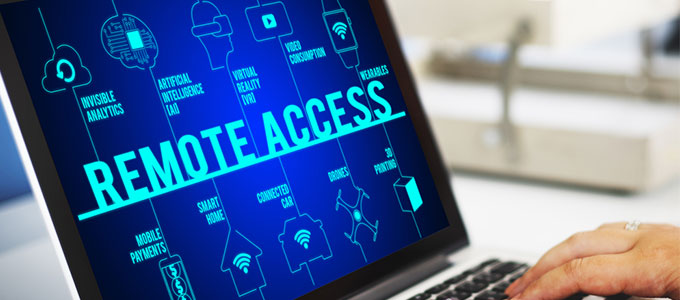
Understanding RAT Malware: Prevention Strategies Against Remote Access Trojans

Understanding RAT Malware: Prevention Strategies Against Remote Access Trojans
Remote access is a common tool of any IT professionals. If you ever had your computer fixed, you probably had a technician access your machine from a remote location. They can take control of your PC using software created for this specific function.

Stay malware-free with reliable antivirus
Don’t compromise your Data and Privacy. TotalAV is a top-notch antivirus program that handles various viruses, trojans, and other malware that may target your devices. It will safeguard your devices and enhance your system performance.
4.9/5
⭐ Editor’s Choice
✔️ Excellent Malware Detection
✔️ Multiple set of Features
✔️ 30 Day Money-Back
Having remote access to any machine is a hacker’s dream. The ability to monitor and gather information from anyone without their knowledge certainly opens them for identity theft, bank account infiltration, and more. Unfortunately, this is very possible using a RAT.
Disclaimer: This post includes affiliate links
If you click on a link and make a purchase, I may receive a commission at no extra cost to you.
What is RAT Malware?
A Remote Access Trojan, more popularly known as RAT, is a type of malware that can conduct covert surveillance to a victim’s computer. Its behavior is very similar to keyloggers . However, RATs can do much more than collect data from keystrokes, usernames, and passwords. Other modern keyloggers can also capture screenshots, emails, browser, chat logs, and more.
However, RATs can do much more than gather information. It can gain remote access to the victim’s computer through specially configured communication protocols that allow the malware to go unnoticed. The backdoor access provides virtually complete access to the machine such as change settings, monitor the user’s behavior, use the computer’s Internet connection, browse and copy files, and even access to other computers in the victim’s network.
Moreover, RATs can spy on victims by discreetly activating a computer’s webcam or microphone . It is especially dangerous when a computer is connected to various home gadgets such as home security systems, CCTV cameras, and more. It can escalate to a dangerous situation when the victim’s computer is used to conduct illegal activities, download illicit files, and conduct criminal transactions using your identity.
Other variants of RATs use the network and other machines connected to it and create a botnet. File hosting, torrenting, DDOS attacks, and Bitcoin mining can be done using your home network without your knowledge. RATs usually do not slow down the computer so it can go unnoticed for quite a while. Some may even stay in hiding for long time.
How Do RATs Get in Your Computer?
Remote Access Trojans gain access to your computer just like any malicious software. It piggybacks on seemingly legitimate files. Once you download the file, the RAT will begin to hide in the computer until it can begin its attack. It can attach in any files such as documents, attachments in emails, and large software packages such as video games. Moreover, websites and advertisements can carry trojan infections just waiting to be downloaded.
Social engineering is also a common method. Hackers trick users into downloading updates, or software that supposedly can improve your computer’s performance. Examples of such update are for Adobe Acrobat and Adobe Flash Player. Hackers can use it to automatically download malware through the software updater.
Examples of RATs
There are many examples of RATs, and some are still active and receive regular updates. One such example is SubSeven . Also known as Sub7, which as developed in 1999. It remained dormant for years until it received an update in 2010. Its notable functions are the ability to record from the microphone and webcam. SubSeven can also take screenshots of the computer and retrieve passwords. In 2003, a fake email in Spanish began circulating claiming to be from Symantec. It tricked users into downloading the malware.
Back Orifice is a legitimate program for remote system administration. It was designed with a client-server architecture that runs using TCP and UDP network protocols. It is notably small and unobtrusive. Back Orifice even installed without the knowledge of the user. Hence, hackers have been using it as a payload of a Trojan Horse to distribute to various victims. It soon evolved into two modern versions: Back Orifice 2000 and Deep Back Orifice.
Other examples of RATs are Poison-Ivy, Turkojan, Optix, and CyberGate. Some have smaller following such as DarkComet, Vortex, and Shark. Nonetheless, they are still effective.
How to Protect Yourself from RAT Malware
Fortunately, it is quite easy to avoid RAT malware. Avoid downloading files from untrustworthy sources. A good indicator of a legitimate website is the HTTPS in the URL. Moreover, do not download attachments from emails with unfamiliar sources. Do not torrent files unless you are certain that the source is clean as well.
It is also essential to keep your browser and operating system updated. Developers often provide security patches that resolve any weaknesses in your machine. Modern browsers also block any automatic downloads. Immediately leave any websites that attempt to do so.
While Windows Defender is a fantastic security software, modern RATs can easily slip past its protection especially when it is not updated. Install a specialized anti-malware program, such as MalwareFox. It allows you to have peace of mind with its real-time protection. Additionally, if you suspect that your machine is infected, its deep scanning function will root out anything hiding in your computer.`
MalwareFox also protects you while browsing with its Browser Cleaner. This will effectively block ads and fake websites that may carry RATs. It specifically protects you from trojans using the Trojan Killer function which will effectively kill any attacks before it infects your computer.
Final Thoughts
Determining if a RAT is hiding in your computer is difficult as it does not exhibit the usual symptoms of a malware infection. However, ensuring that you only access legitimate and trustworthy websites is an excellent first step. Make sure that you have proper layers of protection especially if you regularly download files online or use torrent.
Leave a Comment Cancel reply
Comment
Name Email
Save my name, email, and website in this browser for the next time I comment.
Δ
Also read:
- [Updated] Camera Woes Over OBS Now Functioning for 2024
- [Updated] Dealing with Mistakes Self-Representation During Online Chats for 2024
- [Updated] In 2024, A Beginner's Journey Into Gameplay Capturing with OBS
- 2024 Approved Professional iPhone Cinematography Learn and Apply Top 8 Insights
- Comprehensive MSI Package Design Courses: Elite Skills Development and Accreditation at No Cost
- Connecting Players & Friends Stream Xbox to FB for 2024
- Detect & Eliminate: Comprehensive Tips for Finding and Cleaning Your Phone of Malicious Software
- Effective Repackaging Strategies Guaranteeing Seamless Results
- How to Fix Pokemon Go Route Not Working On Nokia 150 (2023)? | Dr.fone
- Mastering the Art of Adjusting Video Playback Velocity: A Comprehensive Guide
- Simple Steps to Record Conversations on Yahoo Messenger Without Any Cost or Time Restrictions
- Superior App Dev Editors Top 15 Selection
- Title: Understanding RAT Malware: Prevention Strategies Against Remote Access Trojans
- Author: Anthony
- Created at : 2024-10-06 02:42:15
- Updated at : 2024-10-10 16:01:48
- Link: https://win-exclusive.techidaily.com/understanding-rat-malware-prevention-strategies-against-remote-access-trojans/
- License: This work is licensed under CC BY-NC-SA 4.0.

